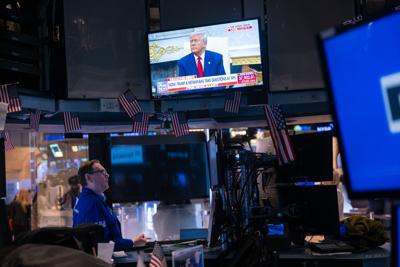The S&P 500 (%5EGSPC) has declined this year, and tariffs are raising concerns. Earlier in 2025, it reached a high of about 6,100. On April 4, it was at 5,142 — a drop of nearly 16%. Some investors are worried, fearing further declines. Investors with a plan are not — I’m among them. Tariffs, taxes on imports, are causing a stir, but they’re not new, they have practical uses, and this isn’t a crisis yet.
I hope this article encourages a broader perspective. Yes, 5,142 is down significantly from 6,100, but in November 2021, the S&P 500 (%5EGSPC) was at 4,700. We’re still ahead by over 400 points. Markets fluctuate; it’s expected. Could it fall further? Yes, if tariff concerns grow. Investing isn’t about avoiding every downturn; it’s about having a strategy to manage them and adapt to larger changes. A plan keeps you steady when others falter. For some, this dip is even a chance to buy strong companies at prices not seen in years.
Tariffs aren’t a modern invention. The U.S. has used them since the Tariff Act of 1789 helped fund the government. They’re still common today — every U.S. president’s administration has applied them, and our trading partners do too. The EU taxes U.S. motorcycles, China targets our pork. Before World War II, U.S. import taxes often ranged from 20% to 50%, sometimes hitting 60%, per economist Douglas Irwin. Since the 1950s, they’ve been low — averaging 2% to 4% in the 2010s before Trump’s first term, according to historian Kris Mitchener. In 2016, the World Bank pegged the U.S. average applied tariff at 1.61%, close to the EU’s 1.6% and Japan’s 1.35%, though higher than Canada’s 0.85%. China’s was 3.54%, Mexico’s 4.36%. Some nations, like the Bahamas at 18.6%, still rely heavily on tariffs.
I’ve drawn on Ray Dalio, an American billionaire and co-chief investment officer of Bridgewater Associates, the world’s largest hedge fund, which he founded in 1975. His insights, simplified here, highlight tariffs’ effects. They generate revenue, shared between foreign producers and U.S. consumers based on price sensitivity. They protect domestic companies from cheap imports, supporting their survival. In times of global tension — like now —t hey ensure we can produce essentials, from machinery to medicine. They also reduce dependence on foreign goods and capital, valuable when relations strain.
But tariffs have downsides. Dalio notes they can lead to “stagflation” — slower growth with higher prices. The U.S. might see inflation from costlier imports; countries we tariff might face deflation as their goods pile up. Protected firms might lose their edge without competition. If others retaliate — say, China taxing U.S. crops — the impact widens. Markets dislike uncertainty, and this correction reflects that unease.
What happens next? It’s uncertain. Will tariffed nations respond in kind? Will the Fed adjust rates to offset effects? Will Congress boost spending? These “second-order” effects, as Dalio calls them, are unclear. This drop might not be the low if confidence wanes. Yet history shows recovery: after Trump’s 2018 tariffs, the S&P fell, then rose by 2019.
This decline isn’t just tariffs. Dalio points to underlying issues — U.S. debt, trade imbalances — that were already present. At 5,142, we’re still above 2022’s low of 3,822. That year, the market dropped, then climbed back. Tariffs could bring long-term benefits, like more U.S. jobs, if managed carefully. The challenge is using them wisely — poorly applied, they amplify harm.
Dalio sees a larger trend: imbalances like debt and foreign reliance must shrink, perhaps through tariffs or other shifts. Markets adjust. A 20% drop from 6,100 hits 4,880—not ideal, but survivable. From 4,700 in 2021 to 6,100 in 2025, we’ve gained ground. A plan keeps you focused.
Tariffs are a tool with two sides: they can help, but they can hurt. Only time will reveal their full impact. Markets and trade are complex—let’s hope the new administration negotiates smartly. Even if they don’t, this will pass. Investing ties to the long-term productivity of real businesses, and I believe the future remains promising. A solid strategy navigates dips like this and adjusts if tariffs shift the landscape, like boosting U.S. industry. Stay diversified, keep perspective, and don’t let today’s decline overshadow tomorrow’s potential.
Joshua Church is an investment advisor representative with Arbor Capital. This article is for informational purposes only and not investment advice. Views expressed are those of the author and do not necessarily reflect those of Arbor Capital.












